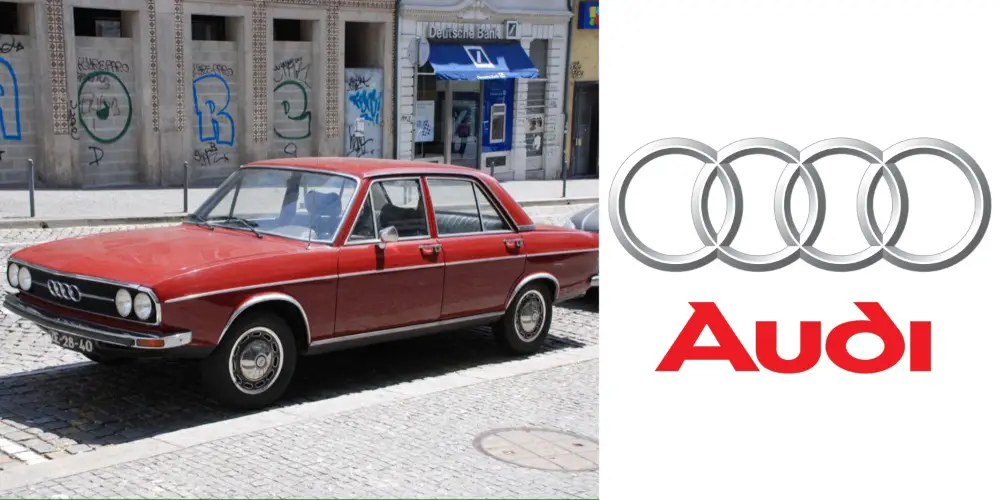
Audi, a brand that is now synonymous with luxury and performance, has a rich history.
Let’s embark on a journey back in time and discover some of the oldest Audi models that paved the way for the impressive machines we know and love today.
Here are the 7 oldest Audi cars ever produced:
7. Audi Type R (1927)
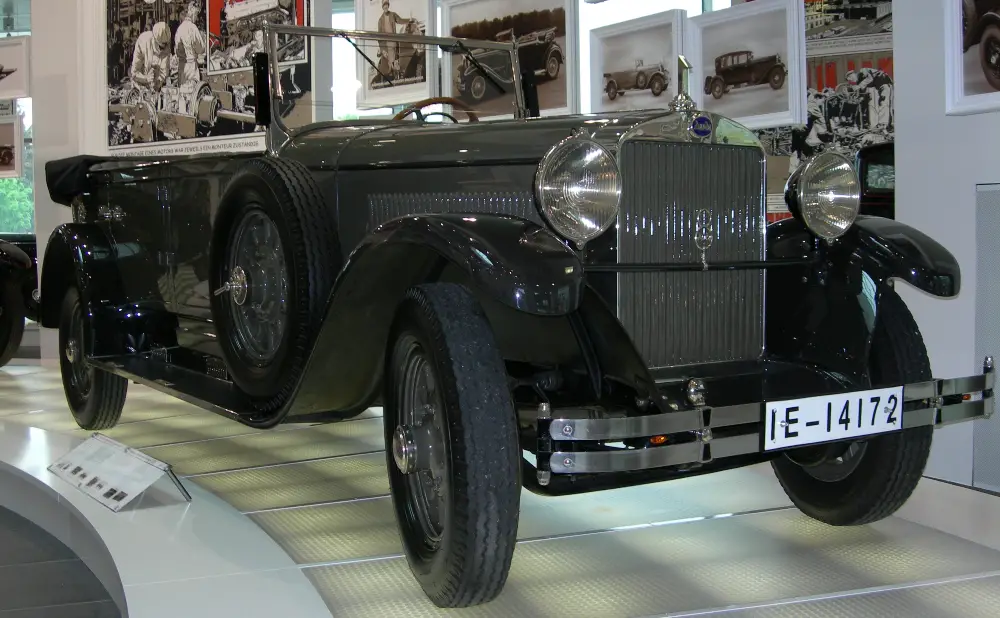
| Production Years | 1927 – 1928 |
| Seating Capacity | 5 |
| Maximum Speed | 120 km/h (75 mph) |
| Total Units Produced | 150 |
In 1927, at the pinnacle of the Roaring Twenties, Audi unveiled the Type R ‘Imperator’. More than just a car, the Imperator was a symbol of extravagance, power, and style, manifesting Audi’s commitment to pushing the limits of luxury and performance.
The Type R ‘Imperator’ stuck to the familiar open-top design and spacious five-person seating capacity. Yet, it surged ahead in the realm of speed, clocking an impressive maximum of 120 km/h (75 mph).
With the Imperator, Audi had fired a potent arrow that not only hit the bull’s eye but also shattered the norms of performance in its era.
Produced in a limited run of around 150 units, the Imperator was as rare as it was luxurious. It brought with it an aura of exclusivity that whispered the language of Audi’s visionary approach, making it a highly sought-after gem in the realm of classic automobiles.
6. Audi Type M (1924)
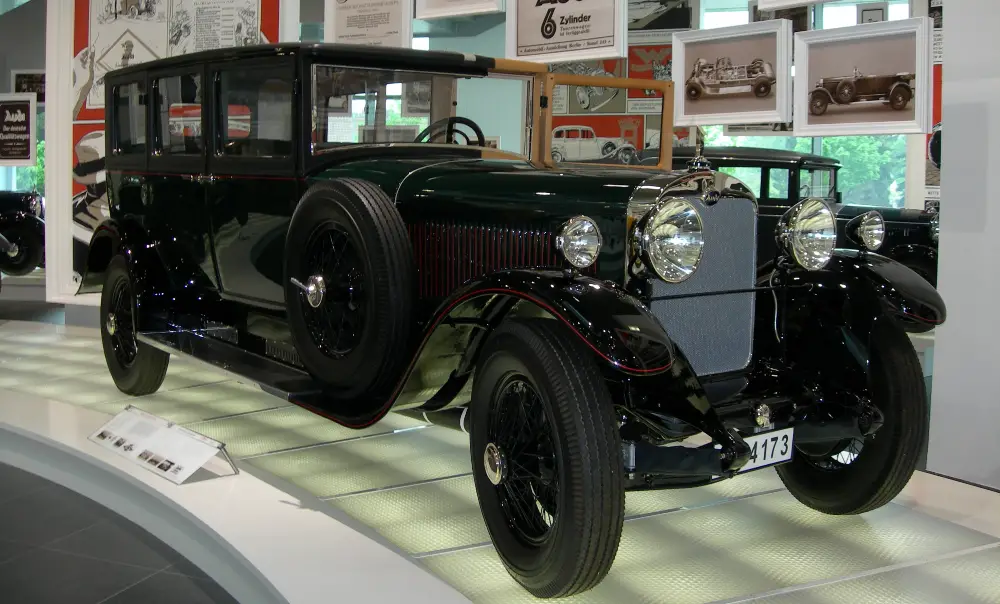
| Production Years | 1924 – 1928 |
| Seating Capacity | 7 |
| Maximum Speed | 120 km/h (75 mph) |
| Total Units Produced | 228 |
The Audi Type M, unveiled in 1924, heralded a new chapter in Audi’s illustrious journey. A high-end luxury model with an expanded seating capacity of seven, the Type M was a radiant beacon of Audi’s capability to seamlessly blend luxury, innovation, and functionality.
Sporting an open-top design like its predecessors, the Type M took a detour from convention, offering a spacious interior that could comfortably accommodate seven occupants.
This was a car built for families, businesses, and those who demanded more from their vehicles. It offered the same maximum speed of 80 km/h (50 mph) as the Type E, balancing grandeur and speed with Audi’s signature finesse.
Produced in a quantity of around 228 units, the Type M was a rarity on the roads, a treasure that added an extra dash of luxury to Audi’s lineup.
5. Audi Type K (1921)
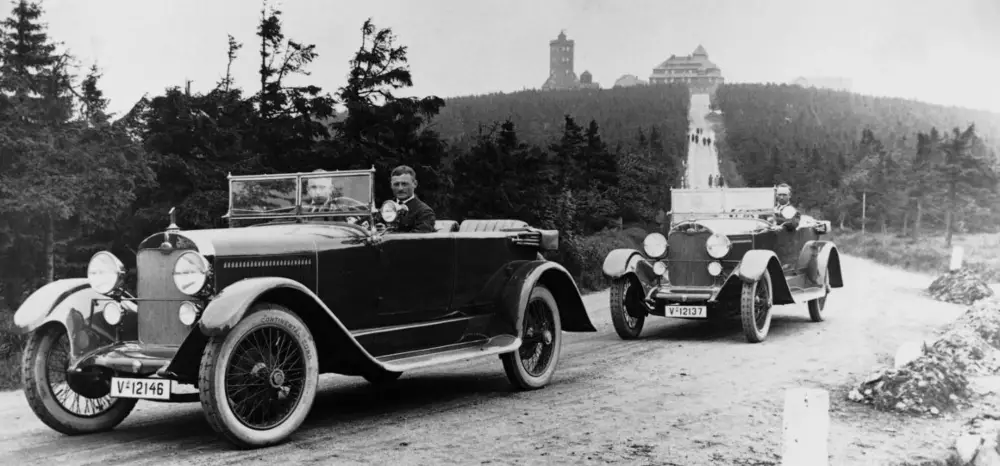
| Production Years | 1921 – 1925 |
| Seating Capacity | 4 |
| Maximum Speed | 95 km/h (59 mph) |
| Total Units Produced | 400 |
1921 served as the stage for a significant innovation in Audi’s saga – the introduction of the Audi Type K. As the first European car with a left-hand drive, the Type K was more than a car; it was the bridge between tradition and transition, proving Audi’s penchant for redefining norms.
Much like its siblings, the Type K offered a four-person seating capacity within its classic open-top design. But the Type K danced to a different tune in terms of speed, clocking a maximum of 95 km/h (59 mph). Audi had woven a different kind of magic with the Type K, one that prioritized innovation and utility over sheer speed.
Approximately 400 units of this pioneering model were produced, making it a more familiar sight on the roads compared to the Type E. Audi’s Type K didn’t just mark an evolution in the brand’s design philosophy; it also reflected a shift in driving culture.
The Type K’s most significant contribution, however, lies in its pioneering adoption of the left-hand drive, a feature that has since become standard across the globe.
This design choice wasn’t just about changing the position of the steering wheel; it was about enhancing road visibility and safety, thus making a significant contribution to automotive industry norms.
4. Audi Type E (1913)
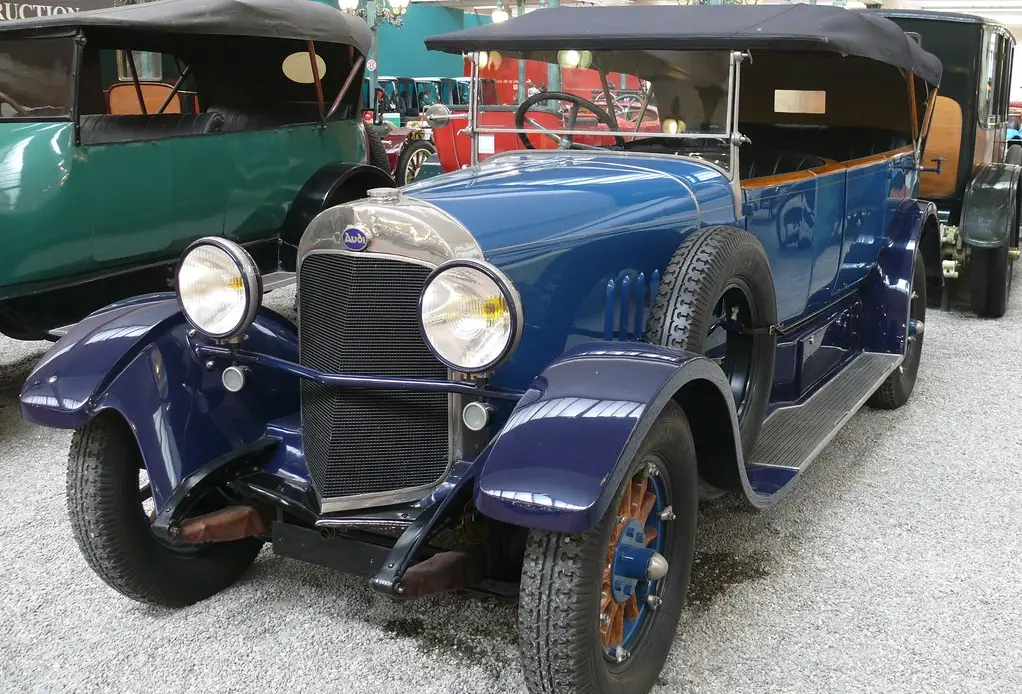
| Production Years | 1913 – 1924 |
| Seating Capacity | 5 |
| Maximum Speed | 90 km/h (56 mph) |
| Total Units Produced | 232 |
As the curtains fell on 1913, Audi pulled back the veil on another engineering marvel – the Audi Type E. The Type E, rising like a gentle giant amidst Audi’s dynamic lineup, was a thoughtful blend of style, comfort, and power, echoing Audi’s ethos of creating not just cars, but experiences.
Sporting a similar open-top design but offering an extra seat, the Type E brought along an extra companion to the journey, accommodating five people.
Despite its larger size, the Type E didn’t compromise on speed, matching the Type B’s maximum speed of 90 km/h (56 mph). Audi had successfully spun the wheel of innovation, weaving size, and speed into a cohesive, harmonious balance.
With approximately 232 units whispering down the roads, the Type E was rarer than the Type C but more common than the Type A and B.
The gentle giant of the Audi family brought more than just an impressive silhouette to the streets; it brought Audi’s unwavering dedication to creating vehicles that encapsulated elegance, performance, and the thrill of driving.
From winning hearts to gracing the roads, the Type E embodied Audi’s vision of combining style, functionality, and emotion into one impeccable package.
3. Audi Type C (1911)

| Production Years | 1911 – 1925 |
| Seating Capacity | 4 |
| Maximum Speed | 90 km/h (56 mph) |
| Total Units Produced | 1,116 |
In the annals of Audi’s history, 1911 marked not just the year, but the dawn of an era. The unveiling of the Audi Type C, a tour de force on wheels, echoed Audi’s ascending roar in the automotive industry. The Type C was more than just a car; it was a love letter to speed, penned by Audi’s relentless spirit of innovation.
Sharing the signature open-top Phaeton design and four-person seating capacity with its predecessors, the Type C strummed a familiar tune. Yet, it added its own unique rhythm to the symphony, pushing the performance boundaries with a maximum speed of 90 km/h (56 mph), a stride swifter than the Type B.
With approximately 1,116 units rolling off the assembly line, the Type C was a much more common sight on the roads compared to the Type A and B. This increase in production signaled Audi’s growing confidence and market presence.
But the Type C didn’t just champion the cause of speed. It epitomized a victorious chapter in Audi’s journey, driving the brand to clinch the Austrian Alpine Runs, not once, but an astounding three times!
2. Audi Type B (1911)
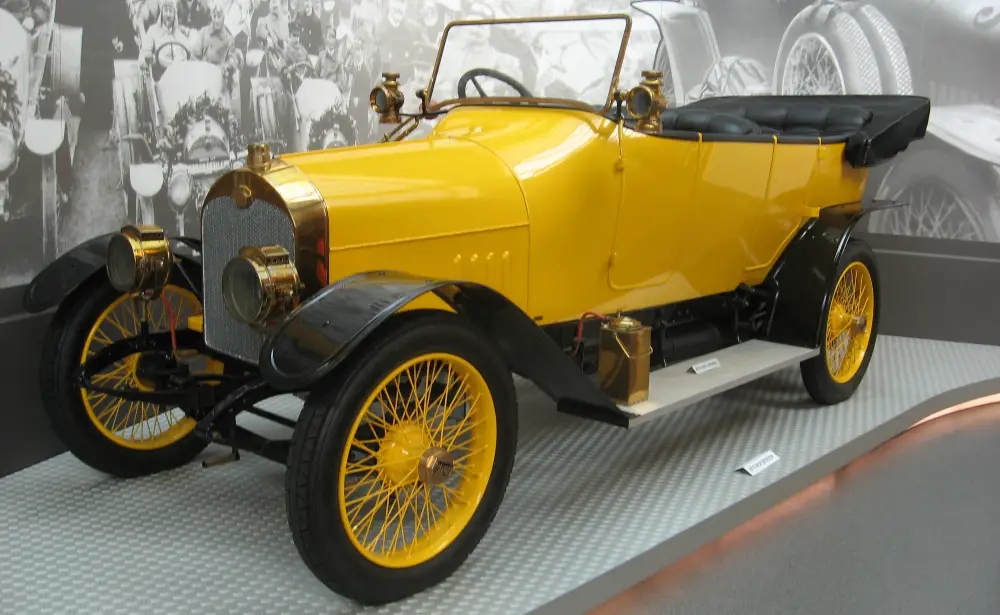
| Production Years | 1911 – 1912 |
| Seating Capacity | 4 |
| Maximum Speed | 80 km/h (50 mph) |
| Total Units Produced | 110 |
As the sun rose in 1911, Audi greeted the world with the Type B, an evolved marvel that embodied the spirit of relentless innovation.
With its predecessor’s legacy delicately cradled in its design, the Type B danced a more refined waltz, adding its own unique notes to the symphony that was Audi’s burgeoning lineage.
The Type B shared the stage with its forerunner, the Type A, with a matching seating capacity of four and the same open-top Phaeton design.
Yet, the Type B had a little more spring in its step, boasting a maximum speed of 80 km/h (50 mph), a hair faster than the Type A. A testament to Audi’s commitment to not just sustain, but to enhance and evolve.
With approximately 110 units gracing the globe, the Type B was as rare as it was revolutionary. It served as a beacon, illuminating Audi’s path toward further innovation and solidifying its foothold in the realm of automotive giants.
1. Audi Type A (1910)
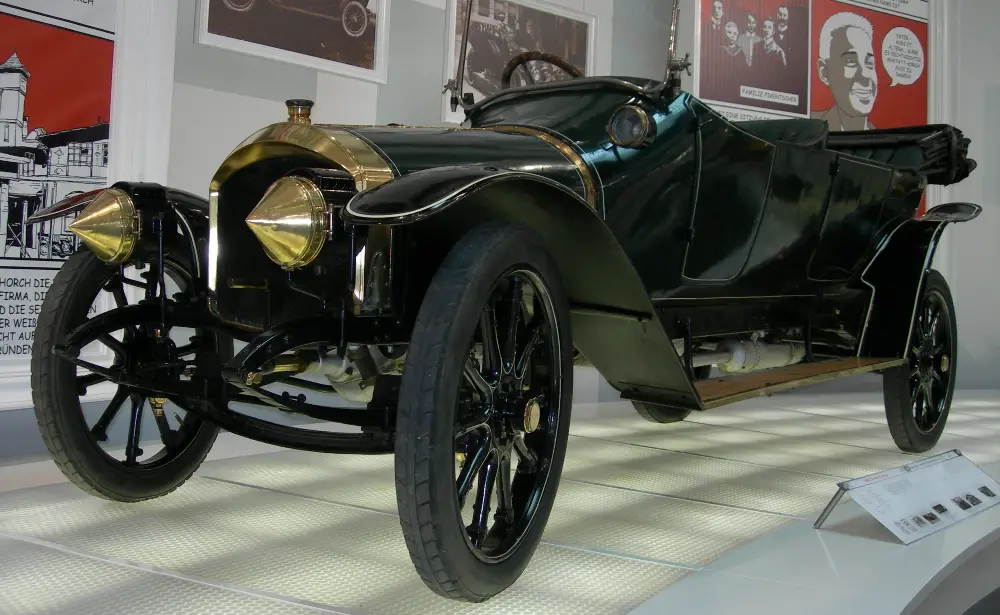
| Production Years | 1910 – 1911 |
| Seating Capacity | 4 |
| Maximum Speed | 75 km/h (46.6 mph) |
| Total Units Produced | 140 |
Picture this: The year is 1910. The age of horse-drawn carriages is slowly fading as the hum of engines starts to dominate. This pivotal time marks the debut of the Audi Type A, the daring brainchild of August Horch, setting the wheels of the Audi legacy in motion.
Beneath the hood of this distinguished automobile roared a 4-cylinder engine, a crowning achievement of German engineering of the time.
This mechanical heart, pumping with 2.6 liters of displacement, pushed the Type A to speeds of around 75 km/h. Back in the day, this was nothing short of a mechanical marvel!
However, the Audi Type A was more than just its engine. It wore an eye-catching open-top Phaeton design, enough to seat a family of four. Its silhouette, a graceful dance of form and function, was a tantalizing preview of the elegant designs that would become a hallmark of Audi.
About 140 of these splendid machines graced the roads from 1910 to 1911. The Type A wasn’t just the first of its kind – it was the christening of the Audi name, meaning “listen” in Latin. This automobile not only broke the mold but laid the blueprint for Audi’s illustrious lineage that followed.
In retrospect, the Audi Type A might seem humble compared to the high-tech marvels of today’s Audi. Yet, it was the courageous embodiment of Audi’s innovative spirit and the spark that ignited a lasting legacy.
